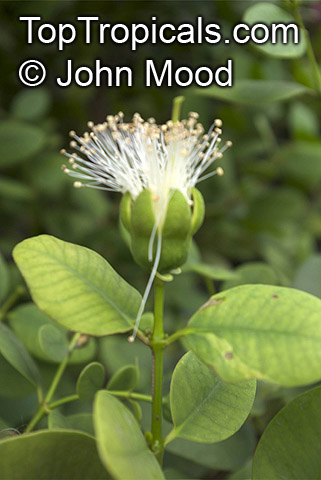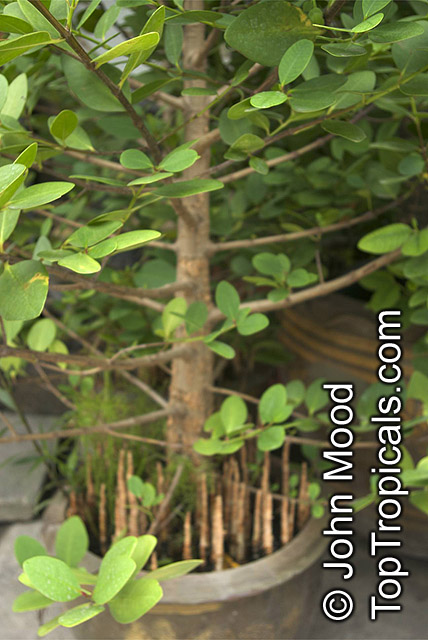Pictogram Guide · Mouse over pictogram for definition
Sonneratia ovata
Gedabu, Mangrove AppleFamily: Lythraceae
Subfamily: Sonneratioidea
Origin: SE Asia









Formerly the Sonneratia were placed in a family called Sonneratiaceae which included both the Sonneratia and the Duabanga, but these two are now placed in their own monotypic subfamilies of the family Lythraceae.
In Sonneratia species, the pneumatophores are erect side branches of the horizontal roots which grow just below the soil. In Sonneratia, they grow more slowly to become woody and may even reach 3 m in height, though most will be less than 50 cm tall.
Its flowers are ephemeral and open at sunset, lasting for only one night; stamens fall off in the early morning. Bats and nectar-feeding birds are the pollinators.
The fruits are edible, though they taste very sour. The fruit is also applied in poultices to relieve sprain.
It can be used to control erosion of tidal river banks and it is cultivated as an ornamental.
Similar plants:

